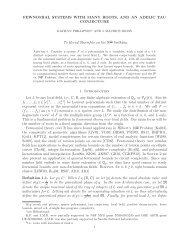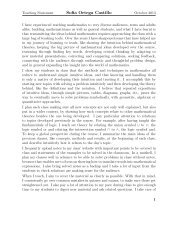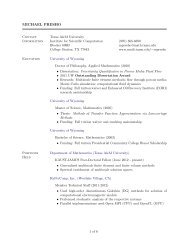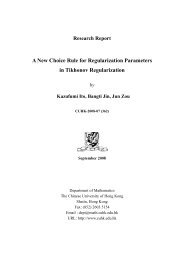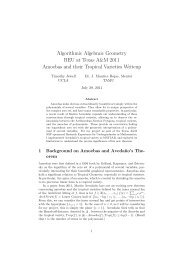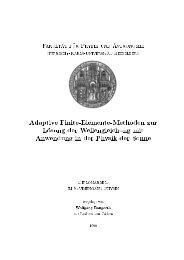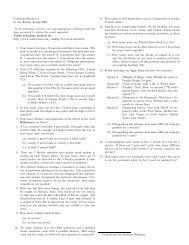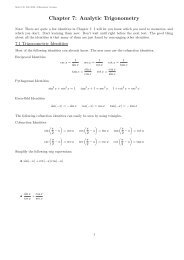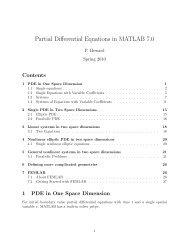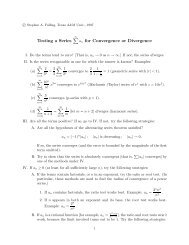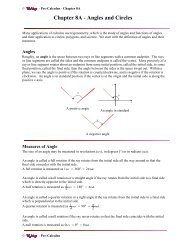Pythagoras and the Pythagoreans - Department of Mathematics
Pythagoras and the Pythagoreans - Department of Mathematics
Pythagoras and the Pythagoreans - Department of Mathematics
Create successful ePaper yourself
Turn your PDF publications into a flip-book with our unique Google optimized e-Paper software.
<strong>Pythagoras</strong> <strong>and</strong> <strong>the</strong> <strong>Pythagoreans</strong> 19<br />
There are numerous pro<strong>of</strong>s, more than 300 by one count, in <strong>the</strong><br />
literature today, <strong>and</strong> some <strong>of</strong> <strong>the</strong>m are easy to follow. We present three<br />
<strong>of</strong> <strong>the</strong>m. The first is a simple appearing pro<strong>of</strong> that establishes <strong>the</strong><br />
<strong>the</strong>orem by visual diagram. To “rigorize” this <strong>the</strong>orem takes more than<br />
just <strong>the</strong> picture. It requires knowledge about <strong>the</strong> similarity <strong>of</strong> figures,<br />
<strong>and</strong> <strong>the</strong> <strong>Pythagoreans</strong> had only a limited <strong>the</strong>ory <strong>of</strong> similarity.<br />
a<br />
b<br />
(a + b) 2 = c 2 +4( 1<br />
2 ab)<br />
a 2 +2ab + b 2 = c 2 +2ab<br />
a 2 + b 2 = c 2<br />
This pro<strong>of</strong> is based upon Books I <strong>and</strong><br />
II <strong>of</strong> Euclid’s Elements, <strong>and</strong> is supposed<br />
to come from <strong>the</strong> figure to <strong>the</strong><br />
right. Euclid allows <strong>the</strong> decomposition<br />
<strong>of</strong> <strong>the</strong> square into <strong>the</strong> two boxes<br />
<strong>and</strong> two rectangles. The rectangles<br />
are cut into <strong>the</strong> four triangles shown<br />
in <strong>the</strong> figure.<br />
Then <strong>the</strong> triangle are reassembled into <strong>the</strong> first figure.<br />
b<br />
a<br />
c<br />
c<br />
c<br />
c<br />
b a<br />
The next pro<strong>of</strong> is based on similarity <strong>and</strong> proportion <strong>and</strong> is a<br />
special case <strong>of</strong> Theorem 31 in Book VI <strong>of</strong> The Elements. Consider <strong>the</strong><br />
figure below.<br />
a<br />
b<br />
a<br />
a<br />
b<br />
b<br />
a<br />
b<br />
a<br />
b



